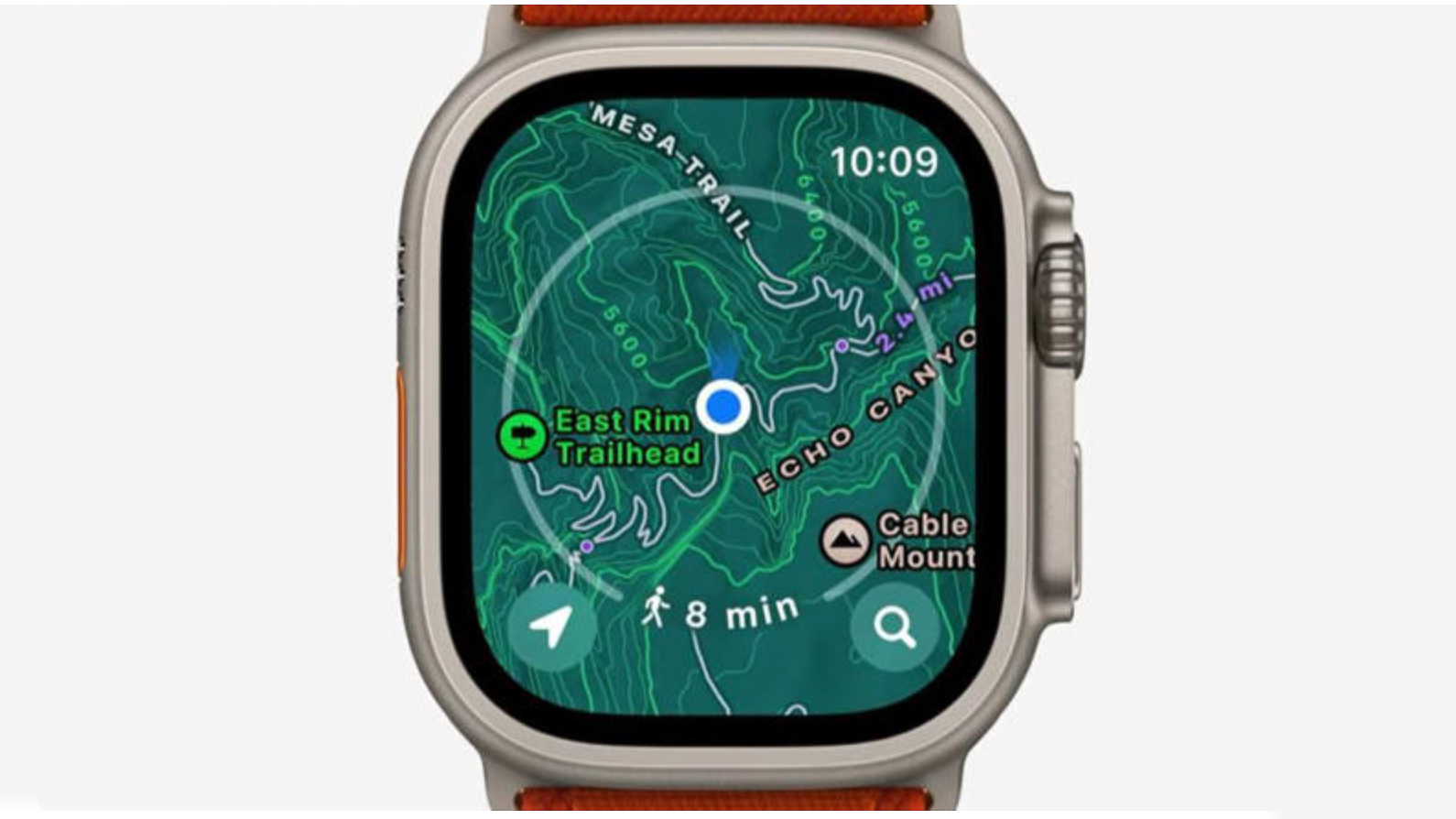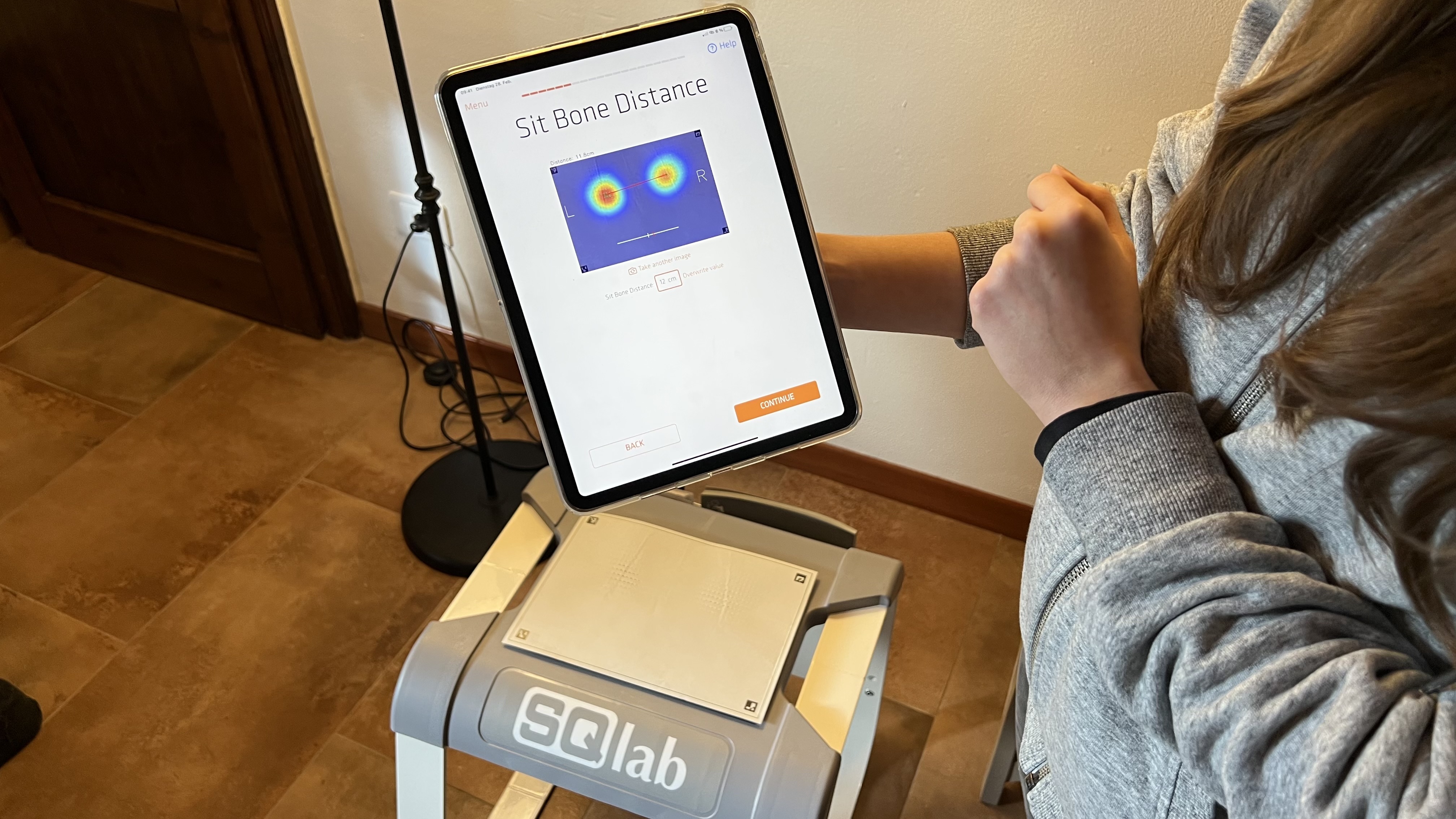Bespoken Word – Tech yourself before you wreck yourself
Apple finally put cycling on their app map this week and Guy Kesteven has been pondering what increasing amounts of tech means for biking

I think it’s fair to say lots of riders have iPhones and lots wear the matching Watches too, but until their reveal of watchOS 10 this week, Apple have been pretty crap when it comes to including cycling functions. Sure the Apple Watch has a bearably accurate heart rate monitor and there are basic ‘outdoor cycling’ and ‘indoor cycling’ functions on the workout mode. Digging deeper into the data it's collected is pretty much impossible though and its only Bluetooth that reliably connects with heart rate straps. That meant if you wanted training zones/plans, full screen riding displays and navigation functionality you needed to run aftermarket apps such as Strava, Komoot etc.

The incoming software takes a lot of that functionality native now though, confirming that cycling has finally joined golf, tennis, hiking and running as ‘Apple approved’ sports. The new OS will talk to power meters/speed sensors and other tech more reliably though and will display this data in new and exciting ways – including full screen displays. In fact, the Apple PR fully embraces fashionably reckless overuse of capitals in telling us that “Live Activity” mode will include “Heart Rate Zones, Elevation, Race Route, Custom Workouts, and a new Cycling Speed view”. The clever little wrist wrapper also has native algorithms for using those numbers to work out your FTP and therefore your power zones, so you don’t need a separate app to do that for you. The new OS can finally import workouts from training apps like Trainer Road too, rather than demanding you recreate the workout in the Watch app which was often more painful than the exercising itself. While Apple hasn’t given a list of exactly what works with the new OS (Trainer Road was used in the presentation though) it’s a safe bet to say most software and hardware developers will be working flat out to make sure their products sync up as soon as possible.

Tech is exploding everywhere else you look in biking too and what’s interesting is how it’s being received. When SRAM launched the latest Eagle T-Type version of their AXS MTB ‘Transmission’ there was lots of crowing about cost, shift speed, UDH direct mounting etc. but nobody blinked an eyelid that it was fully wireless. I don’t think I even saw a single comment about ‘where’s the cable operated version?’ because AXS has proved so reliable firing shift commands through the air not dragging them up and down a pipe with a wire is a non-issue. E-bikes are increasingly being judged less on their raw power or range, but on how interactive/tuneable they are and what the displays look like too.
That’s because whether you like it or not, we are getting more and more comfortable/dependent on feeding more and more data into our devices for all sorts of reasons. Phones and watches can already tell you how you slept, whether your heart did anything weird or whether you were listening to Hatebreed too loud while using that workout it showed you. Depending on the device, it’ll give you a score or a ‘battery level’ reading to let you know whether you might using a relaxation app for the next few days next time or buzz your wrist to tell you it’s bedtime. As well as all the ‘automatic’ sampling going on (unless you turn it off), you can tell your electronic best friend what you ate, attach it to your Bluetooth ‘body composition’ scales to let it know how lean or lardy you are and tell it how that information makes you feel in a mood or mindfulness app. Going back to OS 10, it will even let users “scroll through engaging, multidimensional shapes to choose how they are feeling, select what is having the biggest impact on them, and describe their feelings.”
Chatting to SRAM’s disruptor in chief, Chris Hilton, when they launched RockShox Flight Attendant ‘automatic suspension’, the data being collected is far beyond what’s currently being displayed. Add that input to wattage data from your e-bike/power crank, location data from your GPS and health/mood data from your phone and you get a very detailed picture of not just your riding but you as a rider. If SRAM can tell you when it’s probably a good time to check for chain wear or get your suspension serviced, why wouldn’t they recommend a training plan for you if they’re seeing your wattage drop or your sag numbers increase as you get heavier? If you’re gravitating towards a certain sort of riding or location, surely a suggestion of kit that would work better or new areas to ride would be helpful? Maybe if that crash detection alarm keeps going off it can’t be long before you get a ‘care call’ from an affiliated skills coach. Or perhaps your AI ‘ally’ will just automatically part exchange what’s left of your MTB for a gravel bike (with ABS brakes and a drone derived obstacle avoidance function obviously). And who knows what watchOS 11 will suggest or point you towards on Only Fans if it uses the same ultra-sensitive accelerometers as tennis and golf apps to track your wrist action while mini-pumping a 2.5in Maxxis Assegai back to life.

This all sounds a bit like an episode of Charlie Brooker's ‘Black Mirror’ and data harvesting is the vast secretive business lurking behind the drive towards increasing connection everywhere from dirt riding to dishwashers. However, the basic bait for buying into it is always greater convenience and an easier life and that’s being going on in technology since someone lashed a polished stone onto a wooden handle to create the first axe. So when SQ Labs wanted to size me up for a saddle at the Bike Connection symposium, of course they used an iPad scanner. But while the basic principle was no different to Doris from Debenhams crushing my toes with a Clarks shoe sizer over forty years ago, being emailed links to the bits that fit my sit bones is definitely a convenience – and commercial – win.
The same ‘make it easier’ drive is why while the latest AXS is slower shifting than before, it shifts under load better so is harder to screw up, particularly for less experienced riders on e-bikes. Shimano have taken that principle a stage further with their recently revived (they had a similar system for town bikes years ago) automatic shifting for e-bikes. Bosch are pushing ABS brakes, Classified have developed a wireless version of the hub gears our grandparents used and you can even get valves that'll tell you if your tire pressures are too low. And tech doesn't have to be electronic either. Mechanical evolutions like longer, slacker, lower geometry and pulling the corners up at the edges at trail centres to make berms so we don’t have to steer are just about convenience and reducing the chance of getting things wrong. But that’s another wormhole I’ll be wriggling down another time.
And for everyone screaming about how tech is killing the simple joy of riding and the skill of shifting/steering/climbing stuff only using your legs, the answer is simple. The vast majority of bikes being made and sold are purely mechanical and it’s likely to stay that way for a long time. But for those who do need assistance, convenience and a more digital than analogue connection to the trails, new tech is just the latest in a long line of innovations such as suspension, disc brakes, MTB specific geometry and wheels based on terrain optimals not US beach bike standards. And with more and more new riders joining our sport and more and more older riders trying to stay in it, then assistance in any form is surely a good thing? Or maybe we should all just buy the new Apple VR headset and plug into some form of virtual mountain biking experience that’s much safer and way cheaper than doing the real thing.

Guy Kesteven has been working on Bike Perfect since its launch in 2019. He started writing and testing for bike mags in 1996. Since then he’s written several million words about several thousand test bikes and a ridiculous amount of riding gear. He’s also penned a handful of bike-related books and he reviews MTBs over on YouTube.
Current rides: Cervelo ZFS-5, Specialized Chisel, custom Nicolai enduro tandem, Landescape/Swallow custom gravel tandem
Height: 180cm
Weight: 69kg
